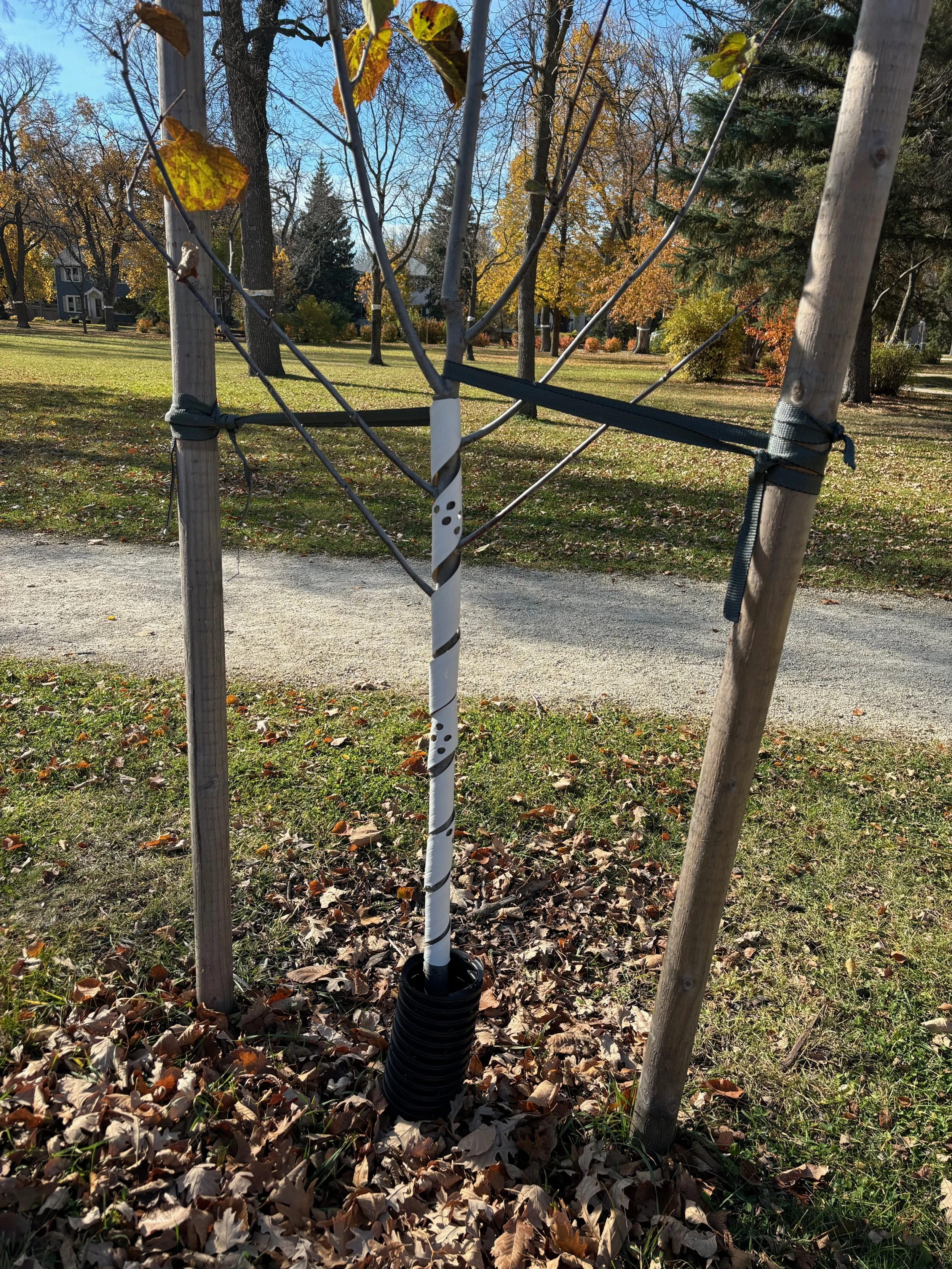Learning to Live with Urban Wildlife
by Wendy Botkin
On Tuesday, May 27, 22 people gathered at the Riverview Community Centre for an evening public information session hosted by Trees Riverview, focused on learning to live with deer and other urban wildlife in our neighbourhood. Kevin Land, Wildlife and Habitat Stewardship Biologist from the City of Winnipeg Naturalist Services Branch provided some background information and advice, and fielded questions from the audience throughout.
The last city-wide inventory of deer occurred in 2006, with most deer located in the Charleswood area near the Assiniboine Forest, and none counted in Riverview at that time. Anecdotally, Riverview residents have noted an increasing number of deer throughout our neighbourhood, especially since 2023. There is speculation that this does not represent an increase in the total deer population in the city, but that small groups have relocated subsequent to the development of the Parker Lands project. Whatever the cause, many residents are responding with high fences around gardens, tree-wrap to protect young trees, and foul-smelling repellents on ornamental plants. All indications are that learning to live with deer and other wildlife is something that Riverview residents will have to get used to for the long term.
Kevin outlined some key points:
NEVER pick up or handle solitary fawns. The doe has likely hidden the fawn and will return (the fawn’s spots mimic dappled sunlight and provide camouflage). If human scent is on the fawn you will put the animal at risk of being abandoned by its mother. If a fawn has been abandoned, Manitoba wildlife rehab centres cannot rear the animal due to concerns about chronic wasting disease and the fawn will be euthanised.
NEVER feed deer, and try to keep them from eating from bird feeders. Feeding deer can alter natural behaviours, often resulting in an increase in deer-vehicle collisions (there are about 500 such collisions per year in Winnipeg). Feeding grain in winter can also cause serious digestive problems, leading to painful illness or death.
Deer can damage trees through browsing - especially in winter, when trees and brush are a primary food source. Bucks can damage young trees in particular when they rub their antlers against bark during fall rut.
While deer may prefer some plants to others, there are no truly ‘deer-resistant’ plants.
Oil-based deer repellents like Bobbex can be effective on ornamental plants for a couple of weeks between applications. The City of Winnipeg uses this in some circumstances.
Deer and other wildlife quickly learn that passive deterrents like shiny plates and spinning wheels are no danger. Any deterrent effect is not likely to last more than a couple of days.
Deer easily jump lower fences. To keep deer from gardens or yards, a fence should be about 8 ft high.
In addition to the wildlife discussion, Trees Riverview also provided a map-based overview of its neighbourhood planting projects over the last 5 years, introduced some information on a proposed Tree Steward program to monitor tree health, and gave some good news about two new plantings scheduled for summer 2025.
Kevin Land, City of Winnipeg Wildlife and Habitat Biologist, provides information on living with urban wildlife to attendees at the Riverview public information session.
Deer can damage young trees throughout the year.
Damage to a young tree likely caused by deer rubbing antlers against the bark during fall rut.
The white tree wrap is an inexpensive option that may provide some protection against damage to the bark. Weeping tile at the base of the tree provides protection from rodents and rabbits.
Wire fencing to protect the tree from deer browsing.
Photo credits: Wendy Botkin, Trees Riverview





